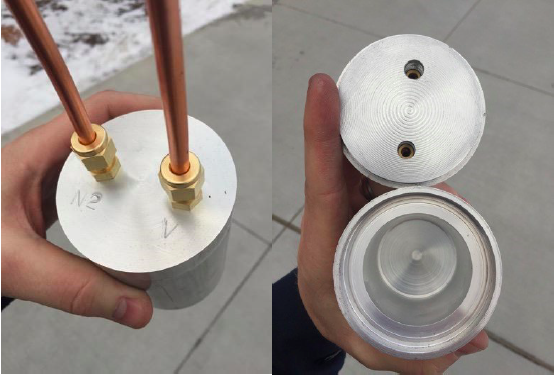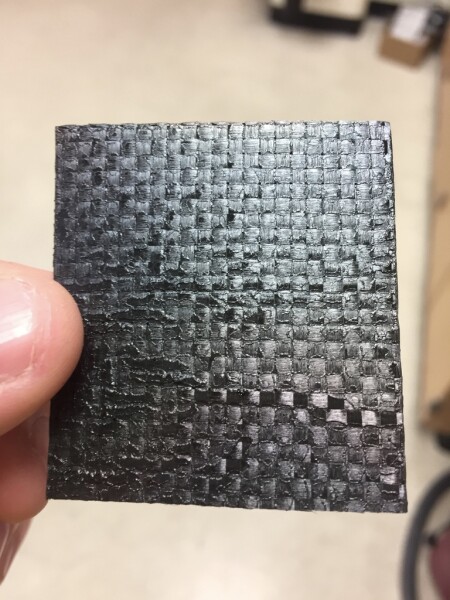Matt Jacobs graduated this month with a B.S. in Manufacturing Engineering Technology and a minor in Environmental Science. Combining his fields of study, he completed an Honors thesis titled “Novel Methods for Composites Recycling Via Pyrolysis.”
His outcomes showed promise for future applications of recycled composites. While larger-scale testing still needs to be completed, Jacobs concluded that there are plausible uses for composite material that has been reclaimed through low-cost pyrolysis.
Jacobs presented his work at the Utah Conference for Undergraduate Research (UCUR) at Utah State University, and at the BYU Honors Conference in March 2020. He will also be presenting at the SME R&D Challenge and the SAMPE Student Competition in May 2020.
His research focuses on making the process of recycling carbon composite materials more viable, to decrease single-use composites. Composites are materials made of a fiber and polymer reinforcement, like fiberglass, kevlar, and carbon fiber. While composites have great advantages, they pose unique challenges in the field of recycling.
When carbon fibers are woven together and paired with a thermoset resin, they form a very strong material that is often much stronger, lighter, and less brittle than metals and ceramics. The bonds that give composite materials their strength are also the reason that they are difficult to break down, which results in composites ultimately being produced as single-use materials that most often end up in a landfill.
According to Jacobs, the object isn’t to replace composites in their first use, but rather find a new way to utilize the recycled material. “What I showed is that, at really low cost, you can get dramatically stronger plastics by recycling the carbon fiber and mixing it with the plastic,” said Jacobs. He says that comparing the recycled materials to first-use carbon fiber is like comparing apples and oranges, they simply have different utilizations.
Jacobs became interested in high-performance materials during an elective class at BYU. He recognized the problem with single-use composites and set out to find a solution, which led him to pyrolysis.
Pyrolysis is a process used to break down materials through applying heat in the absence of oxygen. Jacobs hypothesized that using pyrolysis with composites would allow the thermoset resin to be removed from the material, then dry fibers could be reclaimed and reprocessed.
He designed and machined his own combustion chamber, then conducted small-scale quantitative and qualitative studies using resources acquired through BYU. His research consisted of both removing the resin and reclaiming the materials, as well as conducting scanning electron microscopy (SEM) and strength testing of recovered carbon fiber materials versus a traditional material, polyethylene plastic.
Jacobs acknowledges many helped him throughout this process. “I hope that I’ll look back on this project as one of the most fulfilling parts of my BYU experience. I’d like to extend my heartfelt thanks to my wife, Maddie, for her love and support throughout the project, especially for encouraging me to go to Germany as part of my research,” says Jacobs. “I’d also like to thank Dr. Andy George in the Manufacturing Engineering department for his guidance as my research advisor, as well as many other professors and graduate students for their assistance. Lastly, I am indebted to the BYU Honors Program for their academic and financial support of this project.”
Matt Jacobs has been accepted to a master’s program at Purdue University, where he is tentatively planning on attending this upcoming fall. He sees potential to continue his research at a master’s level, if the opportunity becomes available.
His thesis is published in the BYU Scholars archive and can be found here.
A hard copy can also be checked out from the Harold B. Lee Library. Instructions on how to do that can be found here.








